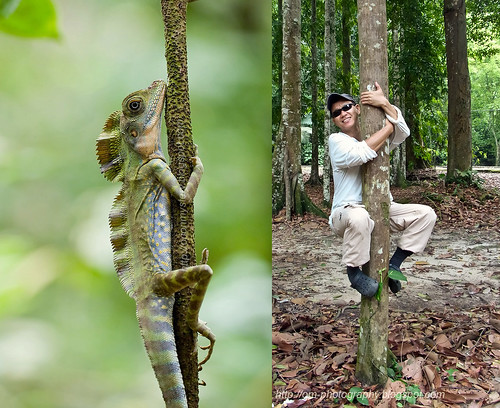
Here is the interview:
Q. Can you tell us a little bit about yourself?
I am known as Kurt (orionmystery) to my real life photography friends and many more in some ten macro photography forums (and facebook!) I actively post in. I have been shooting mainly macro and nature photography since July 2007.
Macro has really opened up a whole new world for me. The more I get to know my macro subjects (mainly arthropods), the more I am in love with them. What started out as a hobby has turned into a great passion! I hope to promote environmental awareness through my macro/nature images. Invertebrates maybe small, but they are the majority. Without them, our ecosystem will collapse in no time!
4 inches away from a pit viper. More MP-E65 snake shots here.
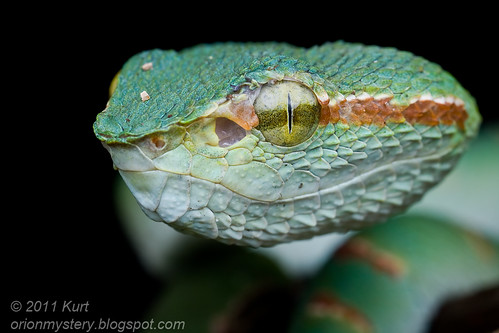
Quoting Sir David Attenborough in the closing of BBC's Life In The Undergrowth documentary, verbatim:
"If we and the rest of the backboned animals were to disappear overnight, the rest of the world would get on pretty well. But if they were to disappear, the land's ecosystems would collapse. The soil would lose its fertility. Many of the plants would no longer be pollinated. Lots of animals, amphibians, reptiles, birds, mammals would have nothing to eat. And our fields and pastures would be covered with dung and carrion. These small creatures are within a few inches of our feet, wherever we go on land — but often, they're disregarded. We would do very well to remember them."
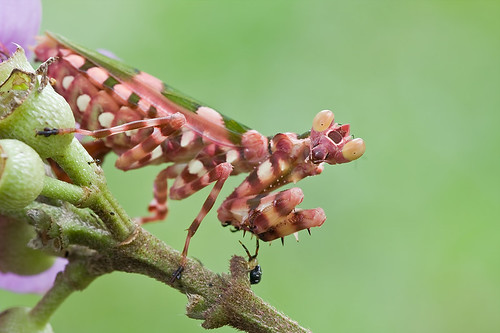
Theopropus elegans, banded flower mantis
I share my macro/nature photography tips in my blog: Up Close With Nature. I also conduct macro workshop regularly. More of my images can be found in my Flickr stream.
Some of my personal achievements as a macro photographer:
longhorn beetle (used on Ukranian Photographer magazine cover)
(a) longhorn beetle on the front cover of Photographer's Magazine, Ukrainian edition, May 2010 issue
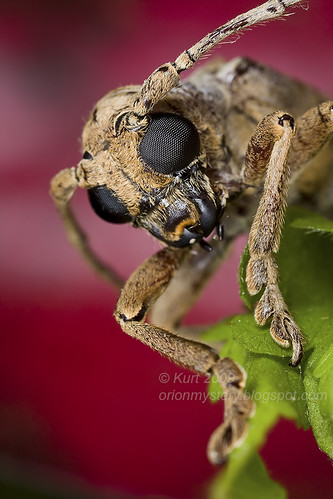
(b) "Weevil taking off" image shortlisted for the Photographer of the Year (POTY), 2010:
(c) Camponotus gigas ant under attack by Phoridae flies chosen as Administrator's Appreciation Award for November 2011 on Photomacrography.net:
(d) longhorn beetle with mites in Reader's Digest Unseen Asia, March 2011
Longhorn beetles with mites, more beetles here.
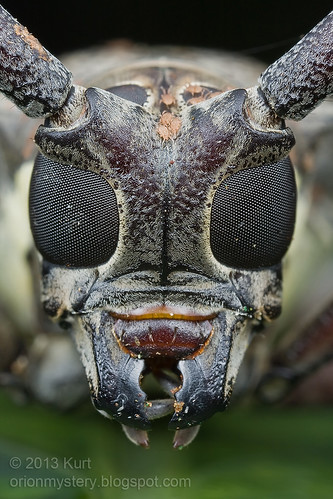
Q: What is your photography history?
I bought my first camera, a film Point & Shoot before I went on a 2-week solo trip to New Zealand, in January, 1996. Not too long after that, I upgraded to a film SLR. I had a macro lens too at that time but never really got into macro photography because film development and photo printing were quite expensive. Besides, I was only interested in landscape and travel photography at that time.
About 10 years later, in 2007, while browsing some macro images in a few local forums, I found myself amazed by the details in the insect images that we didn't get to see with our naked eyes. That really sparked my interest in macro. I bought my DSLR and a 1:1 macro lens in July 17, 2007, and started doing macro photography seriously since then. However, after about a year, I started yearning for more magnification and The Canon MP-E65 1X-5X macro lens seemed like a natural choice for me. I switched to Canon just because of this wonderful lens. I later also acquired the Canon MT-24EX Twin Flash to complete my macro rig. All my images here were shot with a Canon 40D, either with the MP-E65 and lit with the MT-24EX Twin Flash, or Sigma 150mm, with or without a 1.4x tele-converter, with natural light.
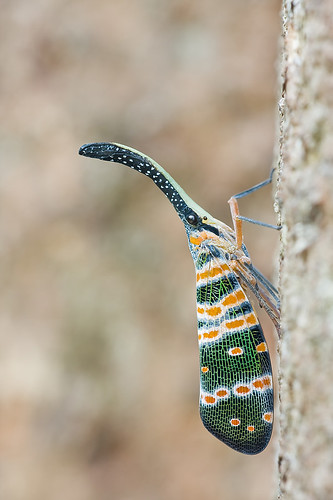
lantern bug (Pyrops spinolae). More here.
Two persons influenced me a lot in my early macro days: Brian Valentine (Lord V) and John Kimbler (Dalantech). I have learned a great deal from these two gentlemen and am forever grateful to them for their generosity in sharing their knowledge. I must also thank Stephen (SteB1) for sharing his excellent insight on light diffusion which has enabled me to take my macro lighting to a level I can live with.
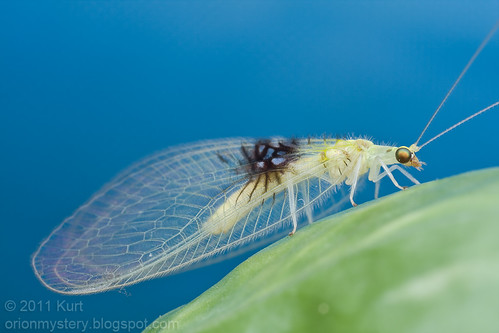
Semachrysa jade, a new species of lacewing I found, more Neuroptera here.
Q: Can you describe your photography style?
I am not sure if I have a style but I always do my best to make my arthropod subjects look good, by giving it good light and by picking the best angles to shoot from. I could spend easily 30 to 60 minutes on one subject, even more if it's something rare . I love both full flash macro as well as natural light macro. I strongly urge that you try both if you haven't already done so!
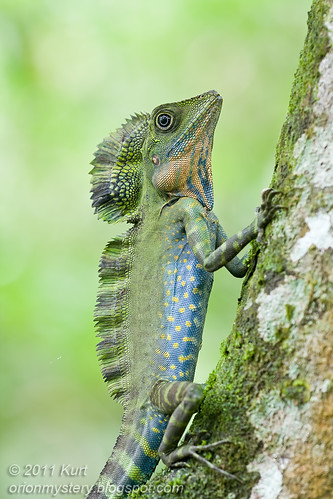
great angle head lizard, Gonocephalus grandis
I always shoot in RAW and process my raw files in Adobe Camera Raw, paying special attention to White Balance. I prefer my nature images to look natural and not overly saturated nor too contrasty! It helps to get the exposure to within the ball park when shooting so you don't have to push up the exposure in post processing which will result in noise. I spend around 5 minutes per image in Adobe Camera Raw, and probably another 5 minutes in Photoshop on dust spot removal and some cloning/spot healing to remove whatever that doesn't add to the image. All in all, it shouldn't take more than 10 minutes per image unless there is focus stacking (to increase depth of field) involved.
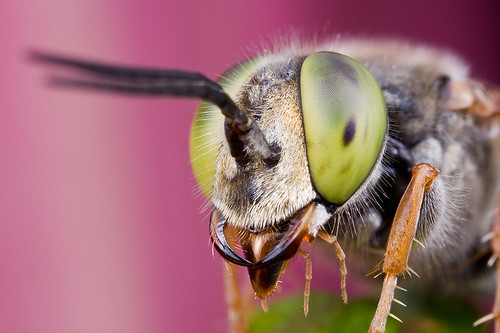
Larrinae wasp. Check out more wasps here.
Q: Any advise for aspiring PhotoMalaysia members?
3 P's : Passion, Patience and Practice - that's what I always tell my workshop participants.
Passion: you need to have passion for macro photography and you need to find your macro subjects fascinating, if not for their beauty, then for their uniqueness!
Patience: unlike human models, arthropods and wind don't take orders from the photographers, so be patient and wait for the right moment and shoot more to increase the likelihood of getting a keeper!
Practice: one common complaint especially for someone new in macro photography is focusing. Unfortunately, there's really no shortcut. Turn off your AF and start practicing your manual focusing! Start with stationary subject and practice, practice, practice to improve your accuracy, and speed.

blue bee Thyreus
No comments:
Post a Comment